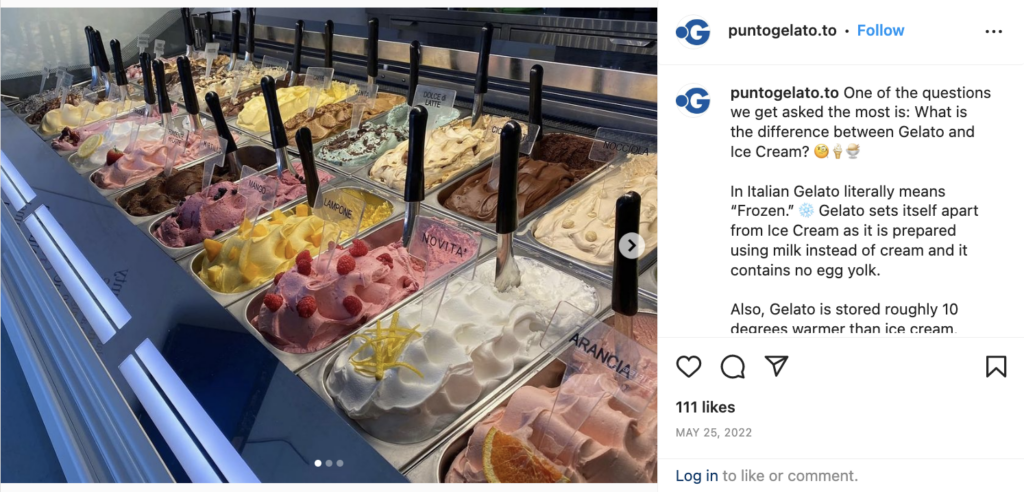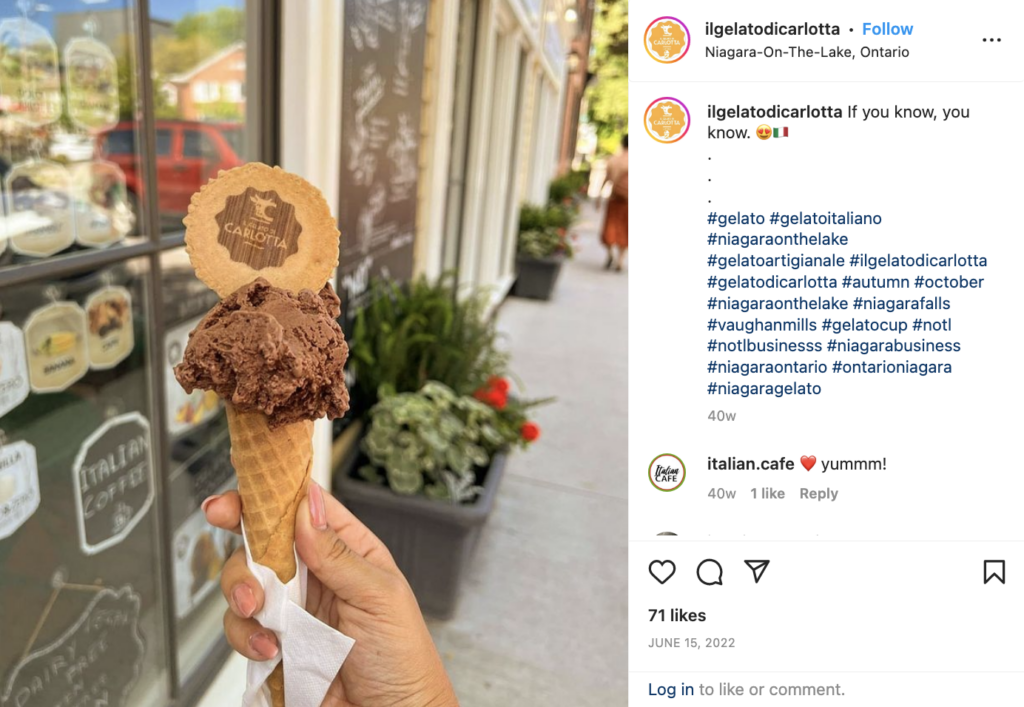Summer is here AKA the season of frozen dessert. Although ice cream and slushies have long dominated our North American childhood memories, gelato is steadily taking over the Toronto food scene.

Invented by Bernardo Buontalenti, gelato technically means frozen. The 16th-century Florentine stage designer, architect, theatrical designer, and military engineer is credited with inventing the dessert. There is even a gelato flavour named after him, made using milk, sugar, cream and eggs, though his original version was flavoured with bergamot, lemons, oranges and dessert wine. It can be served in a cup, cone, or with espresso poured over top to make an affogato. Though it has similarities to ice cream, the Italian frozen dessert is a league of its own.
WHAT IS GELATO?
Regardless of where it is made, gelato’s base ingredients stay the same, though there are a few regional differences. For example, gelato made in northern Italy often has more cream and includes egg yolks to help thicken the mixture and prevent ice crystals from forming. Cornstarch is more commonly used as a thickening agent in southern Italy.

Traditional gelato starts with a custard base. Once the ingredients are properly emulsified, the mixture is flavoured with things like chocolate, chopped pistachios or fruit. It is then slowly churned as it cools, either by machine or by hand to make gelato artigianale, which is artisanal gelato in English. The slow mixing prevents excess air bubbles from being folded into the cream, which is what gives gelato its rich, thick texture.
GELATO VS. ICE CREAM
Gelato and ice cream are both frozen dairy-based desserts, though there are a few key differences. Compared to ice cream, gelato has less fat and air in the mixture, so it is served at warmer temperatures. In line with Italian food traditions, authentic Italian gelato uses simple ingredients — milk, sugar, and real fruit or chocolate to add flavour — and does not include preservatives, chemicals, artificial flavours or artificial colours. As a result, gelaterias will often keep their gelato in metal containers, since gelato artigianale melts quicker than products containing preservatives or stabilizing ingredients. Gelato is served with a spade, which allows servers to shape and soften the gelato, while ice cream is served with a scoop, which keeps it round and fluffy.

Despite gelato’s artisanal appeal, freezer aisles in grocery stores are stocked with mostly ice cream. The invention of the hand-crank freezer in the 1840s created a bit of a setback for gelato, paving the way for the industrial ice cream industry. In recent years, gelato is gaining steam once again, as the farm-to-table and slow food movements gain popularity in Canada.
AUTHENTIC GELATO IN TORONTO
Are you wondering where to find gelato artigianale in Toronto? Keep reading for ICCO Canada’s essential gelateria list.

Mizzica Gelateria & Cafe is serving up some of Toronto’s best traditional Italian gelato and treats. Hailing from Sicily, owners Paolo Di Lallo and Denise Pisani are known for their fresh weekly flavours of gelato made from scratch, including the popular Bronte pistachio gelato the shop is known for. Compared to other pistachios, Sicilian pistachios are known for their sweeter and richer flavour. The secret is in the Mount Etna region’s volcanic soil.

Punto Gelato was recognized by ICCO Canada in 2019 for having the best gelato in Ontario. Carrying over 100 flavours, their gelato is made fresh daily and served out of traditional metal containers at their three locations. Additionally, Punto Gelato can prepare a gelato cake or pie for your next celebration.

Lastly is Il Gelato di Carlotta, run by Carlotta Cattani. The Cattani family is originally from Florence, which is where gelato was first created. After moving to Canada, Carlotta was determined to bring her passion for authentic Italian gelato to Ontario, using a mixture of ingredients sourced locally or imported from Italy, such as hazelnuts from Piemonte.
“In Italy, gelato isn’t just dessert. It is popular as a merenda, which is a late afternoon snack in the hours after lunch and before aperitivo,” says Carlotta Cattani, president and director of production and flavour development, Il Gelato di Carlotta. “In almost any Italian town during the late afternoon you’ll see plenty of people strolling around with gelato in hand.”
Cool off with a scoop of classic Italian gelato this summer. Buon appetito!



Add a comment